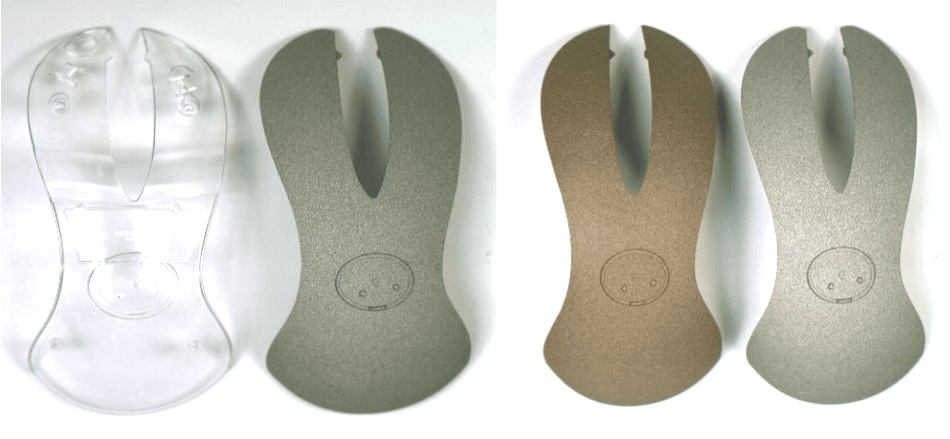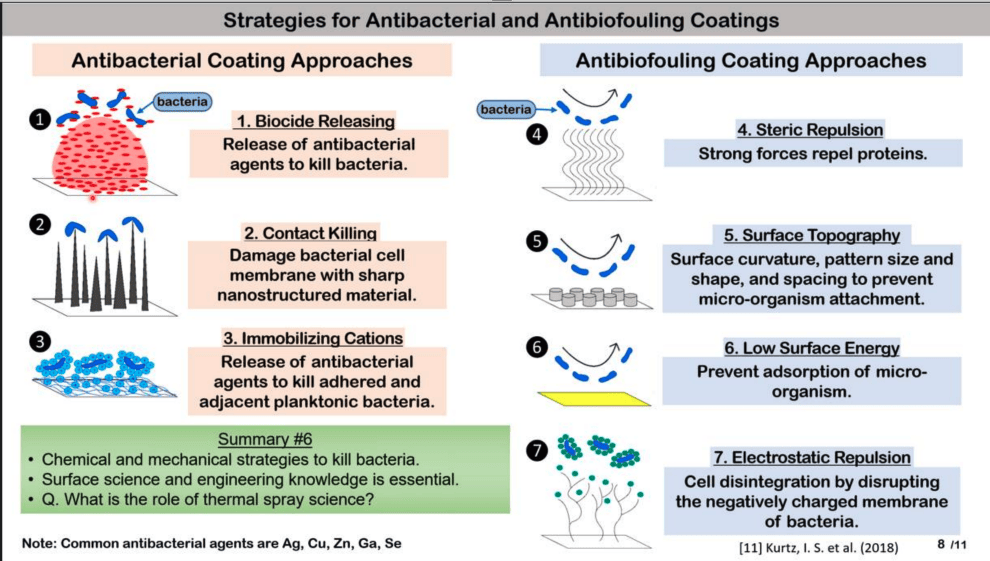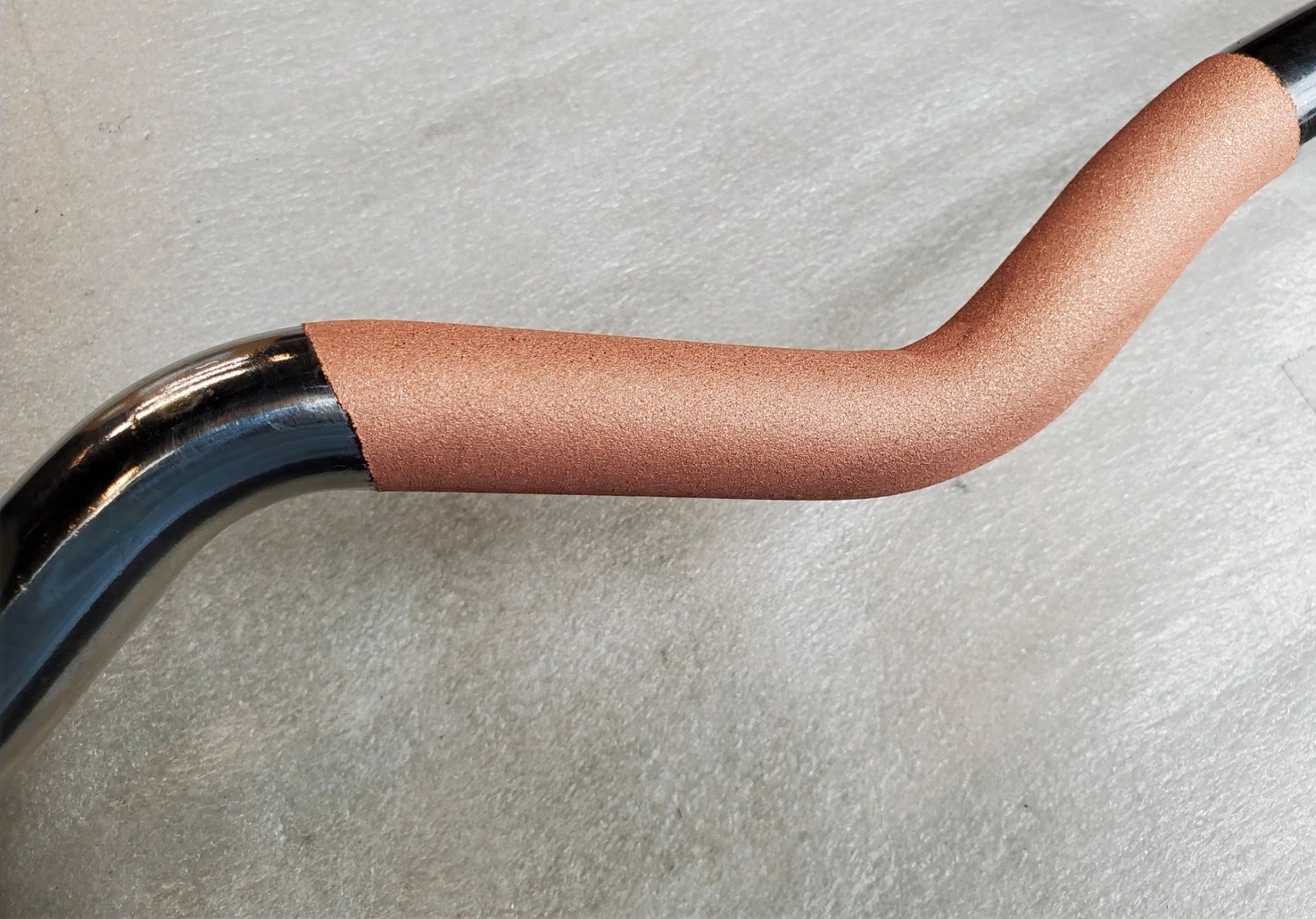Anti-Microbial Coatings – The Understated Defense Against Spreading Microorganisms

With the current global condition society is searching for solutions to treat the infected as well as preventive actions to mitigate the risks of infection. Anti-microbial coatings can enhance common surfaces by providing key properties on substrates that would normally allow for microorganisms to spread. Anti-microbial coatings on surfaces have shown to prevent and destroy these microorganisms. These anti-microbial coating options should be used to supplement other hygienic practices used to the combat the spread of unwanted microorganisms.
ASM international reported a joint Canadian Development and Validation of High-Performance SARS-CoV-2 Antiviral Coatings for High-Touch Surfaces
A 2015 study has shown how Copper can effectively assist in pre-emptively avoiding “host jump” to humans. The preventable viruses include respiratory viruses SARS and MERS. The specific anti-microbial attribute Copper provides is widely thought to be the release of Copper ions. These electrically charged Copper ions disrupt the viral coat, prevent cell respiration and destroy the genetic material (RNA) inside. “What’s more, the viral genome and structure of the viral particles were destroyed, so nothing remained that could pass on infection.” The EPA has acknowledged and provided guidelines for testing efficacy of Copper Surface sanitization. [1]
Thermally Sprayed Copper has predictably shown to provide similar anti-microbial properties as raw Copper and Copper alloys. A study conducted by ATS Labs at Eagan Minnesota in 2013 showed that after a two hour exposure to the Copper coatings, the Staphylococcus aureus (MRSA) bacteria decreased to less than 1/10th its original population with Copper Twin Wire Arc Sprayed Anti-microbial coating and was undetectable with Cold Spray. [2] Thermally Sprayed Copper can be reliably applied to plastic and metal substrates as an anti-microbial coating. Common surfaces that can provide safe haven for microorganisms can become anti-microbial thus reducing the risk of spreading. Copper coatings are also a cost effective way to gain the antimicrobial properties of copper without bearing the costs of manufacturing copper products.
There are many ways that anti-microbial coatings work. These are mechanical and chemical strategies that have proven to work in disallowing bacteria and viruses to spread.

Motivated by healthcare associated infections a decade ago, University of Toronto began studying the anti-microbial properties of copper alloy coatings deposited by the twin wire arc spray process. They found that 95% of gram-negative and gram-positive E. Coli bacteria were dead within 5 minutes of being exposed to the anti-microbial copper. The studies concluded that anti-microbial Copper Alloys coatings have potent biocidal activity that happens in minutes. [5]

There are also liquid paint anti-microbial coating options. Testing the effectiveness of anti-microbial paints is challenging due to the wide range of environments and substrates. Microban has developed paint additives that are >2% wt. of paint composition but lead to a widely applicable anti-microbial coating. Microban is currently working with world-wide partners to allow for OEMs and supply chains to provide anti-microbial coatings for wide ranges of products. The cost of these additives is reasonable at high volumes but they currently restrict the distribution to large batches for OEM use.
Microban additives can be used for paints of any color to create an anti-microbial coating. One of the key benefits of the painted finish is they are typically any easily wipeable substrate. Interior paints have been tested using ASTM D3273 (antifungal) for wooden samples. These additives have been lab confirmed to reduce the survival of microorganisms before and after wiping with anti-microbial sprays.[3]
Vivid can provide an array of options anti-microbial coatings. Thermal sprayed Copper alloys have shown to be affective anti-microbial coatings and they are relatively cost-effective for all volumes. Thermal Sprayed coatings can be added to higher thicknesses and adhesions strengths. Thermal Sprayed anti-bacterial coatings are more robust and rugged for all environments. Anti-microbial paints are widely used and shown to be affective, especially for interior environments. The cost can be kept reasonable at high volumes and large batch sizes. Using paint as an anti-microbial coating you have the advantage of the cosmetic details such as color, gloss and texture.
Anti-microbial coating research and development will continue and evolve to help curb the spread of unwanted microorganisms. Anti-microbial coatings and materials could be the key to slowing the spread of the next infectious disease and hopefully mitigate the risk of another widespread outbreak.
[1] University of Southampton. “Using copper to prevent the spread of respiratory viruses.” ScienceDaily. ScienceDaily, 10 November 2015.
[2] Champagne VK, Helfritch DJ. A demonstration of the antimicrobial effectiveness of various copper surfaces. J Biol Eng. 2013;7(1):8. Published 2013 Mar 27. doi:10.1186/1754-1611-7-8
[3] Lan, Tian M.S. Achieving Protection in Coatings
[4] Kurtz IS, Schiffman JD. Current and Emerging Approaches to Engineer Antibacterial and Antifouling Electrospun Nanofibers.Materials (Basel). 2018;11(7):1059. Published 2018 Jun 22. doi:10.3390/ma11071059
[5] Mostaghimi, Javad Antibacterial Copper Coatings for Frequently Touched and Heat Sensitive Surfaces. 2018

